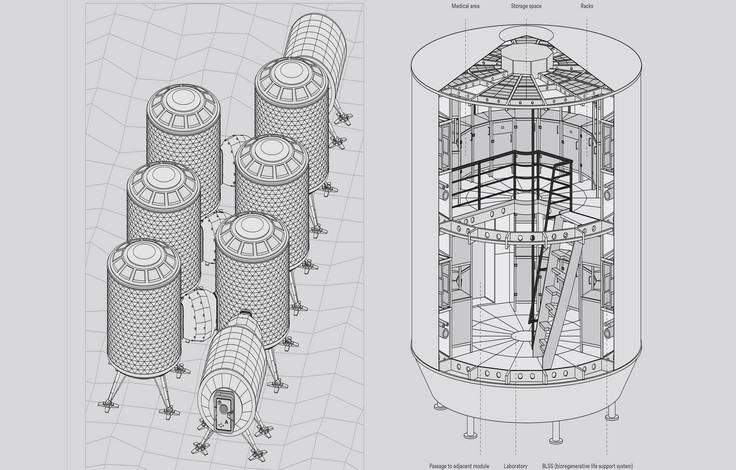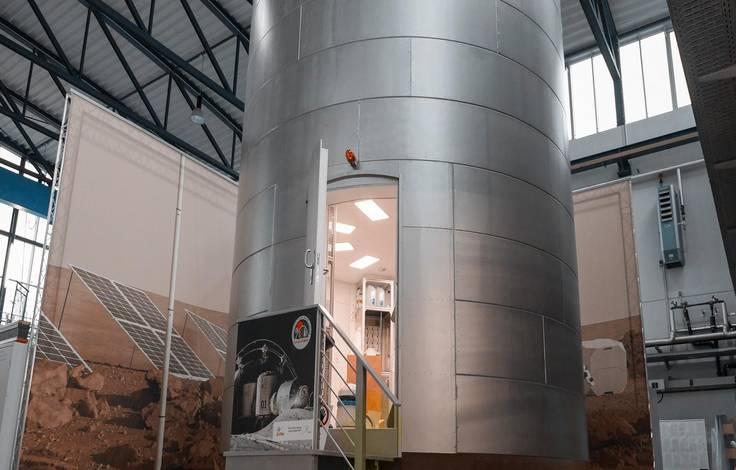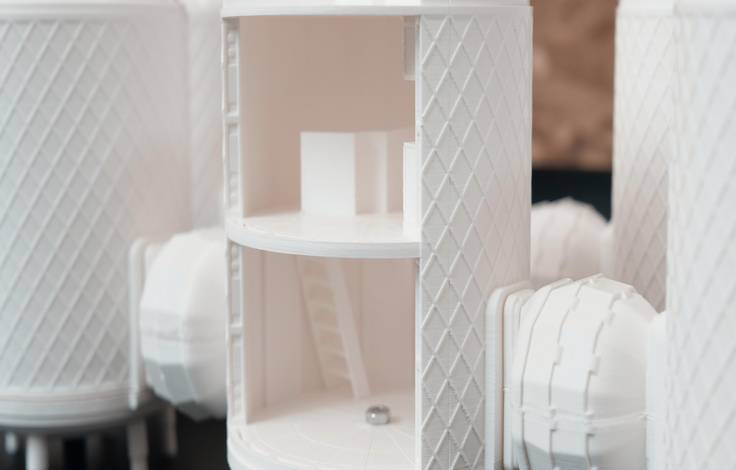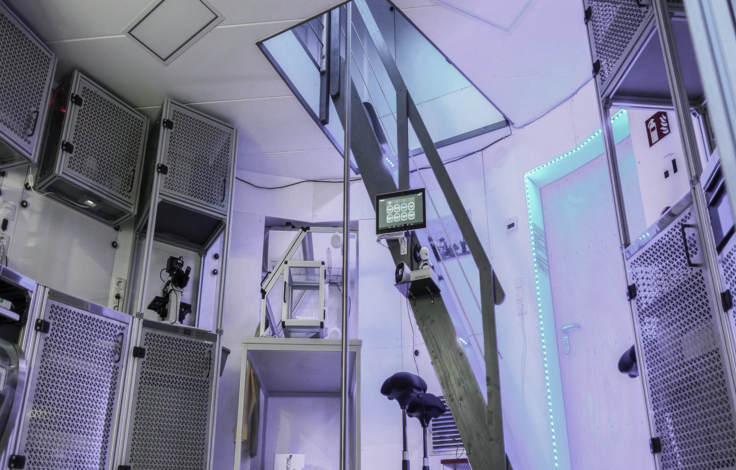MaMBA - Moon and Mars Base Analog

Elon Musk’s red Tesla symbolizes a renewed enthusiasm for space: Humankind is on its way to Mars. Decades after the Apollo missions, we again have a rocket powerful enough to transport humans beyond low Earth orbit. And it’s not just American businessmen who pursue the dream of venturing deeper into space. Space agencies like Europe’s ESA with its Moon Village concept are hoping to land humans on the Moon in the next 20 years, and later even on Mars.
Even though launch technologies have seen impressive progress in the recent past, it is important to remember that transportation to the Moon or Mars is not enough–humans need a shelter for when they actually get there. The shelter is a so-called habitat. Today, there exist more than one dozen simulation habitats in the world, however, they have all been built for terrestrial environments. With them, researchers investigate the psychological effects of isolation on the crew, procedures, and a few isolated technical systems; none of the existing habitats could withstand the harsh lunar conditions.
This ultimately led to the idea behind project MaMBA: Its long-term objective is to create a station that allows humans to survive on the Moon. The station shall consist of several modules, which all fulfill 1-2 functions. For example, there will be a laboratory module, a sleeping module, and airlocks. The laboratory is the scientific centerpiece of the habitat and is therefore currently being developed first.
Each module will be a cylinder with rounded end caps. All modules will be standing upright, with the exception of the airlocks. The working modules will mostly have two stories, while the leisure modules will be single-story cylinders with high ceilings. On the outside, the modules will have a roughly 5 m diameter and a height of 6 to 7 m total.
Project MaMBA is currently being funded by the Klaus Tschira Stiftung gGmbH Foundation. Within the ongoing project, the goal is to construct a so-called mock-up of the laboratory module, a pre-cursor version not (yet) intended to fly. The construction is planned to start in late 2018 and is expected to be completed in mid-2019.
Even though launch technologies have seen impressive progress in the recent past, it is important to remember that transportation to the Moon or Mars is not enough–humans need a shelter for when they actually get there. The shelter is a so-called habitat. Today, there exist more than one dozen simulation habitats in the world, however, they have all been built for terrestrial environments. With them, researchers investigate the psychological effects of isolation on the crew, procedures, and a few isolated technical systems; none of the existing habitats could withstand the harsh lunar conditions.
The two-storey laboratory module is the heart of the habitat. The scientists will spend a lot of time there to advance their research. The lower compartment will be the workplaces, the upper floor is planned as storage. Integrated into the outer wall of the module is a tank for the propagation of cyanobacteria, wich, among other things, produce oxygen and are thus part of the life-support system.
One-week test phase
Is it really possible to work well in a small habitat module? What kind of problems could arise?
Space exploration seminar
As part of the space exploration seminar
Dr. Christiane Heinicke gives a talk about living, working and, most importantly, survival for humans on Mars.






 "
"